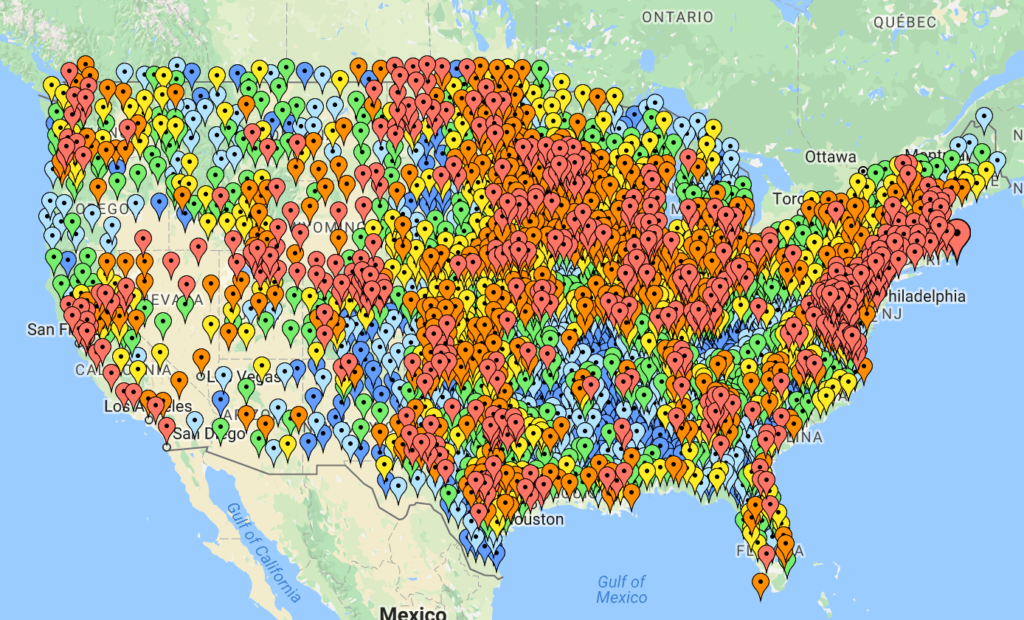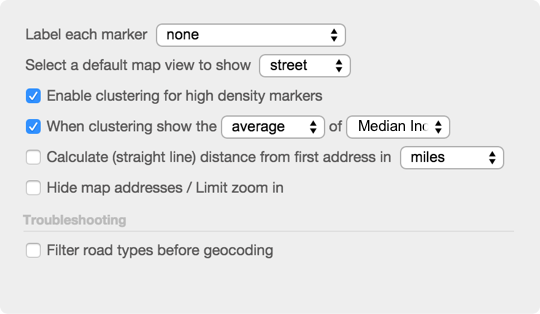These hotels better have stock in pillow chocolates. There are over 200 hotels in the world with 1,000 or more rooms. Many of the hotels have even more than that—over 50 of them have 2,000 or more rooms, and 4,000 rooms isn’t even enough to get you in the top 10. That’s a lot of tiny bars of soap!
While the United States leads the way in the number of hotels, Malaysia claims the largest in the world. Macau, Russia, and Thailand join the highest ranks, as well. Over half of the top 10 are in the same city, and you probably won’t be surprised to learn where that is.
View Biggest Hotels in the World in a full screen map
Click around the map, using the grouping functionality, or read on for our assessment of the top 10, countries with the most hotels, and what the biggest hotel rakes in every night when at full capacity.
Top 10 Biggest Hotels in the World
- First World Hotel (7,351 rooms), Genting Highlands, Malaysia
- The Venetian and The Palazzo (7,117 rooms), Las Vegas, United States
- MGM Grand + The Signature (6,852 rooms), Las Vegas, United States
- CityCenter (6,790 rooms), Las Vegas, United States
- Sands Cotai Central (6,000 rooms), Macau, Macau
- Izmailovo Hotel (5,000 rooms), Moscow, Russia
- Wynn Las Vegas + Encore Las Vegas (4,750 rooms), Las Vegas, United States
- Mandalay Bay + Delano + Four Seasons (4,426 rooms), Las Vegas, United States
- Luxor Las Vegas (4,407 rooms), Las Vegas, United States
- Ambassador City Jomtien (4,219 rooms), Pattaya, Thailand
Together, these top 10 hotels in the world have 56,912 rooms. At double occupancy, the entire city of Clearwater, Florida, could all go on vacation at these 10 properties at the same time.

The First World Hotel, number one on the list, has two towers and over 50 stories total. In addition to rooms, the nearly 2 million square foot facility includes a shopping mall and a theme park. If the hotel uses industry standard workloads for its housekeepers, full capacity requires a staff of over 500 just to clean the rooms. Of course, there would be plenty of money to cover those costs: a sold out First World Hotel would be over $700,000 per night if guests paid full price. And that just includes what they spend on the room, not their trips to the cineplex, dining, or casino.
Speaking of casinos, the most popular city for large hotels is clear with a glance through the top 10. Six in the list are in the same “little" city in Nevada. Some of Las Vegas’ most recognizable names are included above, with 32 hotels in all on the map, far more than any other city.
New York City is next on the list of cities with the most high capacity hotels. There are nine hotels on the map in The Big Apple. The largest, the New York Hilton Midtown, has nearly 2,000 rooms across 47 floors.
Disney World is to credit for Lake Buena Vista and Orlando’s many large hotels. Each city has eight. Five other cities have five or more of the biggest hotels: Atlantic City (7), Chicago (7), Macau (6), Mecca (6), and Reno (5).
Countries With the Most Large Hotels
Nearly two-thirds (139) of the 209 hotels in the world with 1,000 or more rooms are in the United States. The map may make that clear, showing nearly half of the 50 states represented. However, the map also shows the remaining 70 large hotels are spread throughout the rest of the world. Five continents have large hotels—South America and Antarctica don’t make the cut.
There are 13 countries that have three or more high capacity hotels:
- United States (139), total capacity 263,739
- Saudi Arabia (7), total capacity 9,665
- Macau (6), total capacity 20,401
- Russia (5), total capacity 10,738
- Japan (5), total capacity 8,368
- France (5), total capacity 5,134
- China (4), total capacity 6,525
- Canada (4), total capacity 5,338
- Thailand (3), total capacity 6,879
- Singapore (3), total capacity 4,873
- United Arab Emirates (3), total capacity 4,157
- United Kingdom (3), total capacity 3,710
- Germany (3), total capacity 3,145
The total capacity, of course, only includes the hotels with over 1,000 rooms. (That is, Germany obviously has more than 3,145 rooms in the entire country when you include its many lower capacity hotels). Nevertheless, the 190 hotels represented in these 13 countries together include over 350,000 rooms. If each of those rooms had a minibar, those small refrigerators would take up more than half of a Panamax container ship. Imagine all that expensive booze!
A whole lot of insights can fit in a single map. Why not create your map today?










